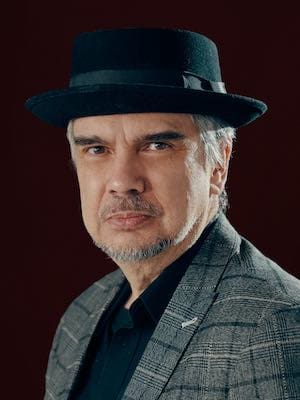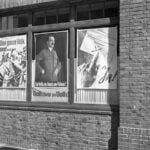Snap! Flash! Employees, board members, citizens and students of color are being followed around as they work, shop, study or play. But this time it’s by camera-toting public relations folk eager to catch them in the act of representing the organization’s commitment to diversity.
What if you can’t find a real person of color in your company? Don’t despair: a digitally placed cut-and-pasted face can make your brochure as “global” as you need it to be.
Knowing that authentic diversity would challenge existing structures of oppression, who wants that kind of situation on their hands? Just cleverly and creatively construct the image of political correctness. As long as things look diverse on the surface, the organization can be left alone to do business as usual.
Meanwhile, nothing really changes.
Promoting diversity without actually fostering it takes a lot of energy and planning. Here are some ways to keep the status quo.
First, do a lot of “talking.” Create ad hoc committees, hire pricey consultants, have focus groups, organize summits. Just keep talking. Talk. Talk. Talk. Create so many comprehensive plans, strategies and initiatives that everyone will be busy meeting, talking, and scheduling more meetings to talk some more.
Use phrases like, “How can we do better?” and “We have a profound commitment to diversity.” Keep the meetings going on for years if possible, making the occasional or symbolic inroad now and then to demonstrate “progress.” Get your group to practice some politically correct phrases like, “we NEVER see your color,” and, “he/she is just as good as any white person.”
Second, promote diversity, but only up to a point. Martin Luther King found this to be the most dangerous foe of the civil rights movement.
Remember, his letter from the Birmingham jail was not addressed to the conservatives of his time. He knew where the George Wallaces of the world stood on the issue of segregation.
He wrote his letter to religious liberals who advised him to tone done the rhetoric, to be patient, to wait. They insisted that MLK’s rhetoric was hurting his own cause by pushing away potential allies. They were all in favor of desegregation, as long as they still maintained privilege from within their social structures.
It was to these limousine liberals to whom MLK declared, “Justice delayed is justice denied.”
So be careful. Don’t add too many people of color (just one or two), lest they actually begin to influence the ethos of the organization.
Third, inflate the number of people of color by including anyone who even slightly resembles a person of color.
For example, if someone has one-eighth part Cherokee blood, count them as a person of color even though they personally don’t identify with Amerindians and haven’t for generations.
People from Africa, Asia and Latin America who were born and still identify with their countries of origin usually identify themselves as internationals, not people of color. People of color are those born and/or raised in the racist culture of this country, and who have and continue to fight the prevailing existing racism.
In many cases, internationals are of the upper classes of their own countries and have more in common with the ruling classes in this country than with this country’s disenfranchised. In fact, many internationals would be insulted to be confused with a U.S. Latino/a, African American or Asian American.
While it is true that people of color and internationals can create strategic alliances to combat racism, padding the numbers by including internationals will help the organization appear “sincere” for “helping” people from abroad, while they avoid the messy work of facing the marginalized communities within their own neighborhoods.
Fourth, find people of color who speak with white voices and advocate policies detrimental to their own racial and/or ethnic community.
You can always find “white” Latino/as, African Americans, Asians Americans, and Amerindians who are willing out of conviction, profit, self-loathing or survival to parrot the dominant culture’s ideologies.
Such individuals step on the heads of their own people to catch the eye of those in power, hoping to be rewarded for publicly preferring whiteness over their own group.
We Latino/as call them “coconuts,” because they are brown on the outside but white on the inside. African Americans call them “Oreos.” They are known as “bananas” by Asian-Americans and “apples” by Amerindians.
They allow the institution to become multi-colored without having to become multi-cultural, which is, after all, what many institutions secretly prefer. Isn’t it?
Miguel De La Torre is director of the Justice and Peace Institute and associate professor of Iliff School of Theology in Denver.
Click here to order Miguel De La Torre’s Doing Christian Ethics From the Margins from Amazon.com
Professor of Social Ethics and Latinx Studies at Iliff School of Theology in Denver, Colorado, and a contributing correspondent at Good Faith Media.




